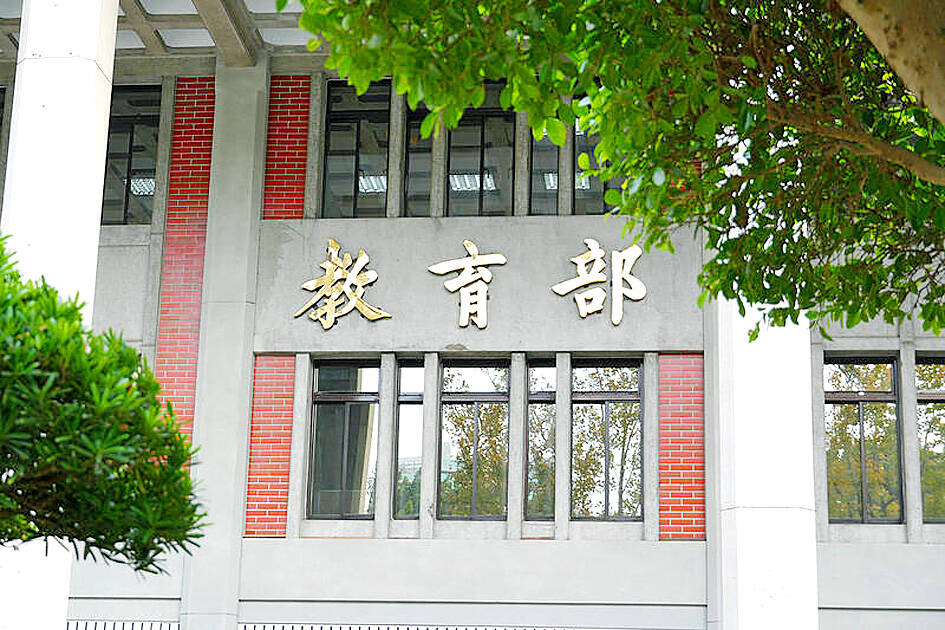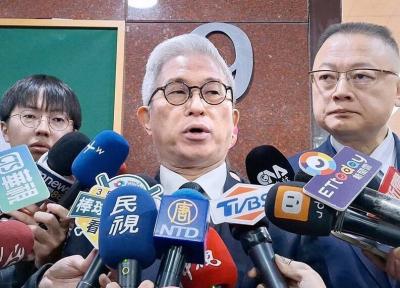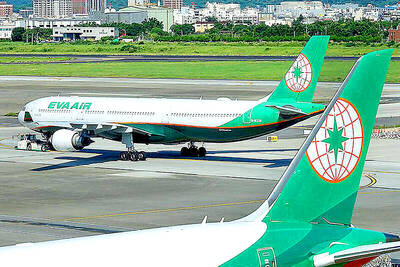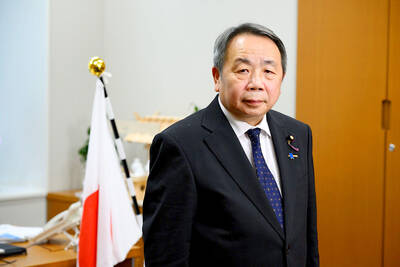The government has unveiled a NT$19.13 billion (US$647.84 million) subsidy package for universities this year, in response to growing concerns about the impact of population aging on the education sector.
This year’s allocation is an increase of NT$568 million compared with the higher education subsidies last year.
Part of the subsidies comes from the Ministry of Education’s (MOE) ongoing Higher Education Cultivation Project, Department of Higher Education Director-General Liao Kao-hsien (廖高賢) said on Tuesday last week.

Photo: Rachel Lin, Taipei Times
The current phase of the project, which runs from 2023 to 2027, aims to improve the quality and accessibility of education while enhancing the global rankings of Taiwanese universities, he said.
National Taiwan University received NT$2.63 billion, the largest amount awarded to a Taiwan university, an increase of NT$32.64 million from last year.
National Sun Yat-sen University received NT$616.94 million, up NT$198.1 million from the previous year, while National Chung Hsing University was allocated NT$546.56 million, an increase of NT$85.72 million.
National Yang Ming Chiao Tung University received NT$1.44 billion, an increase of NT$66.52 million from last year, while National Tsing Hua University also received NT$1.44 billion, with the same NT$66.52 million rise. The four universities received the largest increases in government subsidies.
National Cheng Kung University received NT$1.5 billion, up NT$25.78 million from the previous year, and National Central University was allocated NT$464.35 million, an increase of NT$37.67 million.
The National Taiwan University of Science and Technology received NT$45.07 billion, the largest amount among the nation’s vocational universities.
The first part of the project was allocated NT$12.36 billion, which includes NT$2.45 billion aimed at strengthening academia’s ties with local communities and facilitating the enrollment of students from disadvantaged backgrounds or of indigenous descent, Liao said.
The second part of the project was budgeted NT$6.77 billion, including NT$4.86 billion for schools to use at their discretion and NT$1.88 billion to specific departments or research centers, he said.
Last year, 10 research centers at National Taiwan University received NT$45 million in government subsidies under separate programs managed by the MOE and the Ministry of Science and Technology, university president Chen Wen-chang (陳文章) reported.
Recent government policy changes shifted the responsibility for funding these research centers to the MOE, whose budget has yet to be approved by the legislature, he said.
Taiwanese higher education institutions need about NT$20 billion of subsidies this year if the nation wishes to strengthen the educational system and retain academic talent, he said, urging lawmakers to support universities.
In agreement, National Central University president Hsiau Shu-san (蕭述三) said that the government should provide greater support to Taiwanese universities, which face increasing competition from foreign institutions.

A strong continental cold air mass is to bring pollutants to Taiwan from tomorrow, the Ministry of Environment said today, as it issued an “orange” air quality alert for most of the country. All of Taiwan except for Hualien and Taitung counties is to be under an “orange” air quality alert tomorrow, indicating air quality that is unhealthy for sensitive groups. In China, areas from Shandong to Shanghai have been enveloped in haze since Saturday, the ministry said in a news release. Yesterday, hourly concentrations of PM2.5 in these areas ranged from 65 to 160 micrograms per cubic meter (mg/m³), and pollutants were

Taiwan’s armed forces have established response protocols for a wide range of sudden contingencies, including the “Wan Chun Plan” to protect the head of state, the Ministry of Defense (MND) said today. After US President Donald Trump on Saturday launched a series of airstrikes in Venezuela and kidnapped Venezuelan President Nicolas Maduro, concerns have been raised as to whether China would launch a similar “decapitation strike” on Taiwan. The armed forces regularly coordinate with relevant agencies and practice drills to ensure preparedness for a wide range of scenarios, Vice Minister of National Defense Hsu Szu-chien (徐斯儉) told reporters before a

EVA Airways on Saturday said that it had suspended a pilot and opened an investigation after he allegedly lost his temper and punched the first officer several times as their plane was taxiing before takeoff at Los Angeles International Airport. According to a report published on Thursday by The Reporter, the incident occurred after the flight’s Malaysian first officer tried to warn the Taiwanese pilot, surnamed Wen (文), that he was taxiing faster than the speed limit of 30 knots (55.6kph). After alerting the pilot several times without response, the first officer manually applied the brakes in accordance with standard operating

Japanese Councilor Hei Seki (石平) on Wednesday said that he plans to visit Taiwan, saying that would “prove that Taiwan is an independent country and does not belong to China.” Seki, a member of the Japan Innovation Party, was born in Chengdu in China’s Sichuan Province and became a naturalized Japanese in 2007. He was elected to the House of Concilors last year. His views on the Chinese Communist Party (CCP) — espoused in a series of books on politics and history — prompted Beijing to sanction him, including barring Seki from traveling to China. Seki wrote on X that he intends